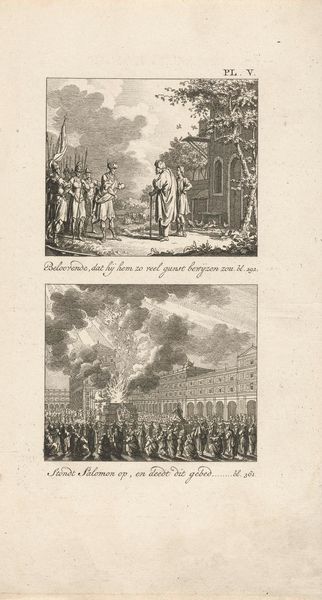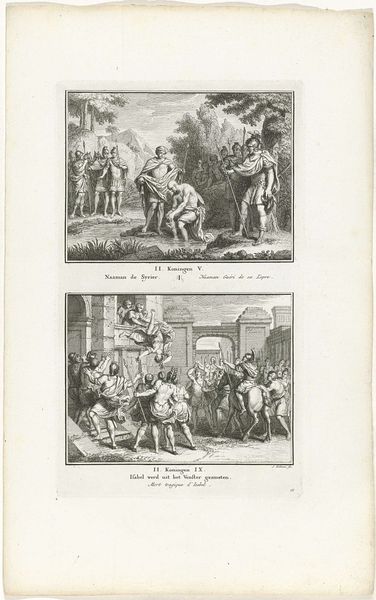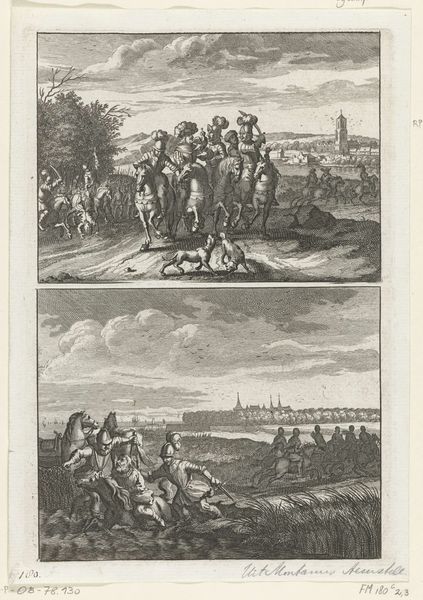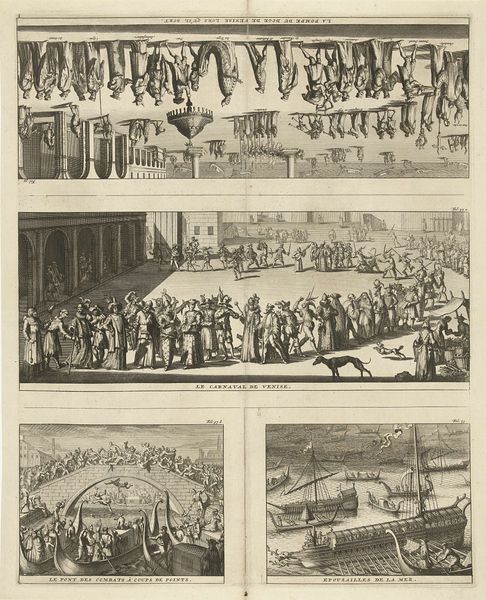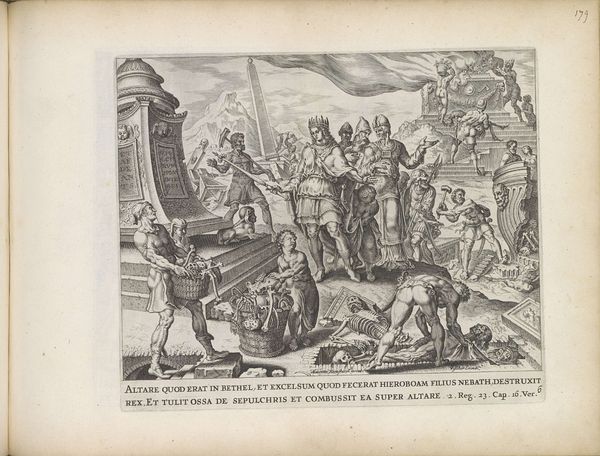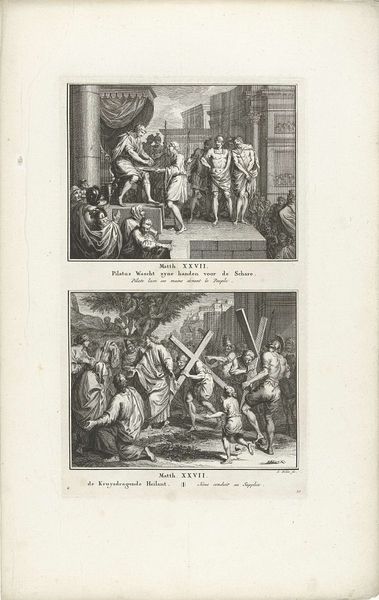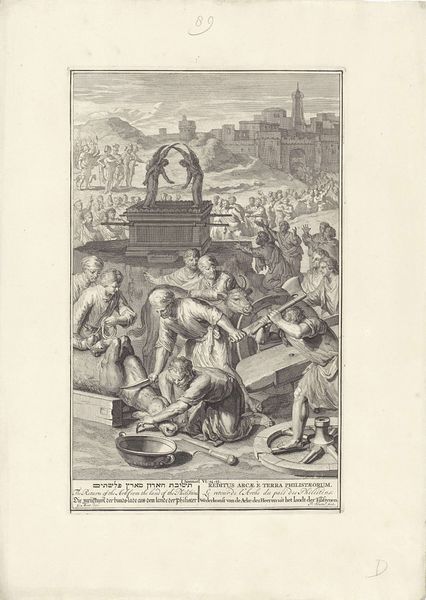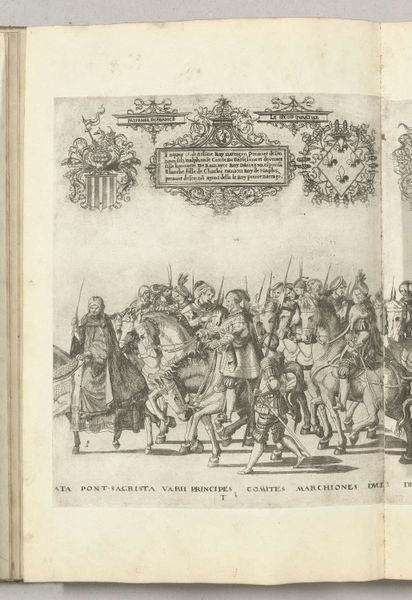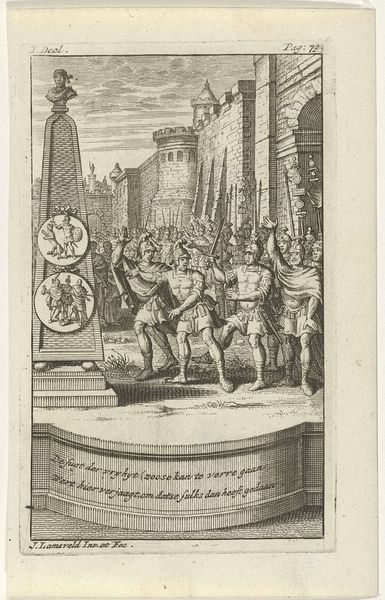
print, engraving
#
aged paper
#
narrative-art
#
baroque
# print
#
old engraving style
#
figuration
#
line
#
history-painting
#
engraving
Dimensions: height 217 mm, width 124 mm
Copyright: Rijks Museum: Open Domain
Curator: Here we have Noach van der Meer's print, "Jefta's dochter / Simsons dood," dating sometime between 1724 and 1769. It’s an engraving currently held in the Rijksmuseum. Editor: It’s striking how this print uses two distinct scenes. The top one, presumably Jephthah meeting his daughter, is very formal and rigid. The bottom one is pure chaos, seemingly illustrating Samson's death. How does the contrast affect the overall message, do you think? Curator: That's a astute observation. We should consider the public the artist intended to reach. Prints such as these served as a popular form of visual media. By juxtaposing Jephthah’s tragic vow and Samson's self-sacrifice, the artist seems to invite contemplation on the themes of duty, sacrifice, and perhaps the consequences of religious or moral commitments within a social context. Notice the theatrical gestures in both scenes. Do they remind you of anything? Editor: Like a stage play, perhaps? It feels very performative, almost melodramatic. Is this common for baroque engravings? Curator: Absolutely! The baroque period was fond of dramatic and expressive representations. But more specifically, this kind of imagery, spread through prints, participated in broader cultural and even political discussions of morality. Remember, art wasn't just "art," it was part of a larger system of values, of instruction, especially in the 18th century when literacy wasn’t universal. Editor: So the artist wasn't just telling stories, but making an argument, in a way? I suppose prints made those arguments really accessible. Curator: Precisely! And that accessibility is something to consider when viewing the print today. It wasn't just for the wealthy elite. Consider how it was distributed, who bought it, how it was interpreted in its time. This really helps us understand its broader significance. Editor: That's fascinating. It makes you think about how much the act of viewing itself shapes meaning. I'll never look at prints the same way again! Curator: Indeed. And reflecting on that interplay between creation, distribution, and reception opens new doors for interpreting any artwork.
Comments
No comments
Be the first to comment and join the conversation on the ultimate creative platform.

